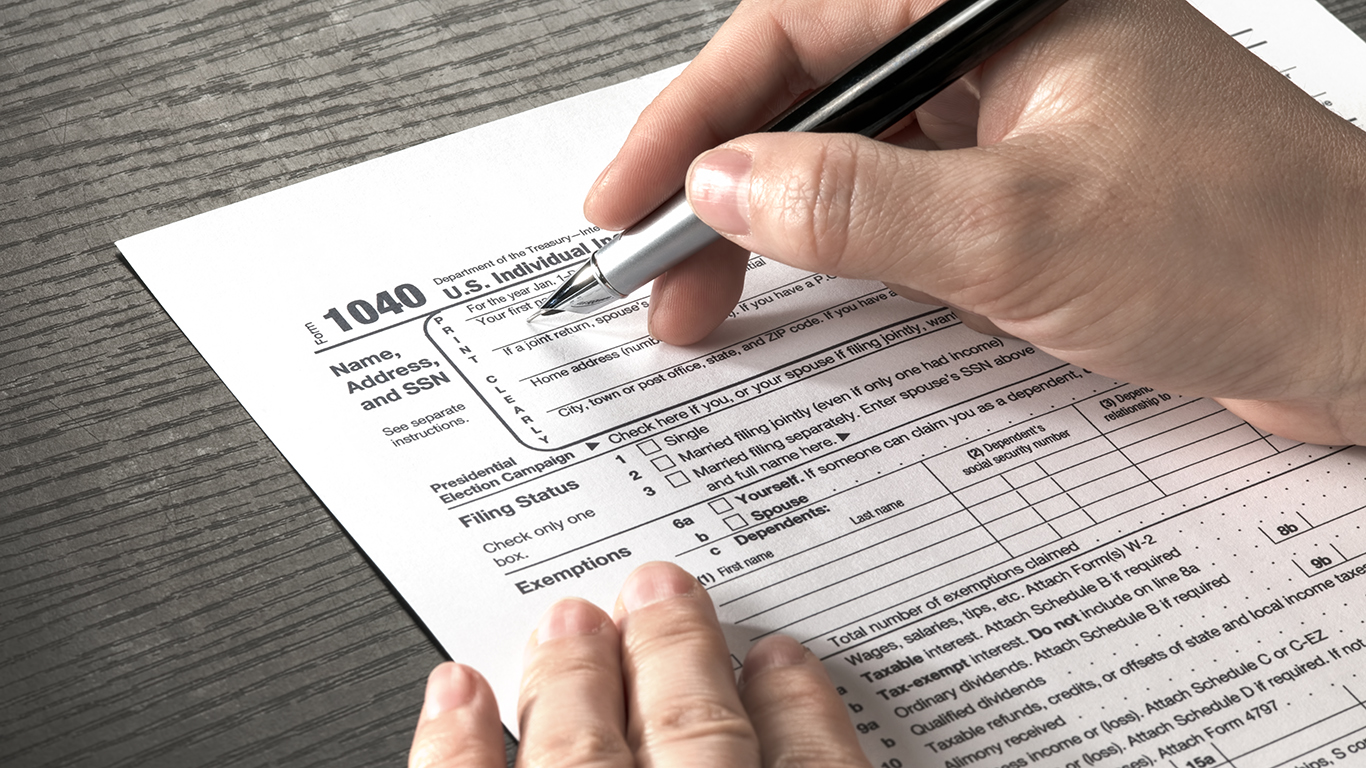Investing
As Tax Filing Deadline Nears, Capital Gains and Dividend Tax Traps to Avoid

Published:
Last Updated:

With the tax code having been changed yet again in 2018, many investors who have started filing their taxes will be getting some surprises around how much they owe for taxes on capital gains and dividends. The bull market now being 10 years old should create a scenario for long-term gains for the investing public. And companies that have been paying out dividends have tended to keep raising their payouts year over year for many years now.
There are many pitfalls and misconceptions about taxes when it comes to investing. Many investors hear a routinely referenced figure that about half of all total returns over time come from dividends, particularly as those dividends get reinvested. In some ways, investors may do better looking for long-term capital gains.
The unfortunate reality is that taxes are rather complicated when it comes to investing. There are different taxes and fees that have to be paid in dividends according to your ordinary income tax brackets. Investors have to factor in taxes at their state level as well, and that is often taxed at varying rates on a table by each state. This is also frequently true for capital gains, and there can be a huge difference in short-term versus long-term capital gains.
Generally speaking, the higher your tax bracket, the higher the tax rates will be on both dividends and long-term capital gains.
24/7 Wall St. has provided a much more detailed view of 15 investment pitfalls and surprises to avoid during tax season. While these are targeted with the most recent years under tax reform, note that some of these issues may handily change over time.
Not all capital gains are treated equal come tax time. Long-term capital gains are from investments held for a year or more, and short-term gains are anything shorter than a year. People who hold stocks, mutual funds or exchange traded funds for less than a year have to pay taxes on any gains based on their current federal income bracket. Capital gains on long-term investments are generally taxed at lower rates.
For 2018 and for those married people filing jointly, the tax rates are as follows: Those making less than $77,200 will pay a long-term capital gains rate of 0%; those with ordinary income of $77,201 to $479,000 will pay 15%; and those earning $479,001 and higher will pay 20%.
Depending on the purchase date and sale date, sometimes delaying a sale of an investment by a few days or weeks can make a huge difference in the taxes owed.
Another trick in capital gains taxes is if those gains come from gold or other precious metals — or other unconventional things people may buy and sell to make a profit. Not all investments are equal in the eyes of the IRS and Treasury Department. Gains in this sort get taxed as “collectibles,” and even the long-term capital gains taxes can expect to be hit with a 28% tax at the federal level rather than the lower long-term capital gains tax brackets.
Investors love dividends, and over the course of a lifetime of investing those dividends can end up making up a substantial portion of investors’ total returns. If investors own dividend stocks in a taxable investing account, they have to pay taxes on those dividends whether they reinvest the funds or use the money for other purposes.
One common mistake investors make, particularly around the years when there are changes to the tax code, is to assume that tax rates for dividends are static. In 2003, President George W. Bush lowered the tax rate on dividends from being taxed at the individual income tax brackets down to 15%. These rates have changed further under Presidents Obama and Trump.
There is also a difference between normal dividends and qualified dividends. The federal income tax brackets range from 10% to 37% for the 2018 tax year, after having been in a range of 10% to 39.6% in 2017. SmartAsset also shows a breakdown of how all these tax bracket nuances can play a serious role in how your dividends will be taxed.
It is always best to check what those tax rates are based on your own income tax bracket for capital gains and dividends alike. Other factors such as what state you live in also will make a huge difference come tax time. Not knowing your tax bracket for dividends may bring you an expected and unwanted tax bill, even if you already have spent or reinvested that money.
Retirement planning doesn’t have to feel overwhelming. The key is finding expert guidance—and SmartAsset’s simple quiz makes it easier than ever for you to connect with a vetted financial advisor.
Here’s how it works:
Why wait? Start building the retirement you’ve always dreamed of. Click here to get started today!
Thank you for reading! Have some feedback for us?
Contact the 24/7 Wall St. editorial team.